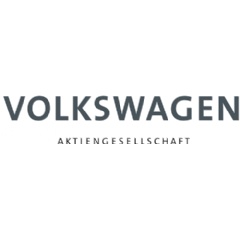Scania takes part in multi-brand platooning project
“Drag accounts for 25% of a truck’s fuel consumption”
Scania is among the key stakeholders collaborating in a new Swedish research project into truck platooning. The three-year project, Sweden4Platooning, will see Scania work with DB Schenker, Volvo, the Royal Institute of Technology, RISE (Research Institutes of Sweden) and the Swedish Transport Administration in multi-brand platoons on public roads. The aim is to explore the full potential of a technology that could reduce carbon emissions and make goods transport more efficient.
DB Schenker has trucks from both truck makers in its daily operations, which constitutes invaluable input to the project as the full potential of platooning can only be realised when trucks from different manufacturers communicate and find each other.
“Platooning has the potential to improve traffic flows on highways and to decrease the environmental impact of transport. However, the technology will only reach markets broadly if vehicles from more than one brand can find each other,” says Gunnar Tornmalm, head of Predevelopment, Systems Development at Scania.
“Drag accounts for 25% of a truck’s fuel consumption”
When trucks can drive closely behind each one another, fuel economy is improved as a result of the reduction in drag. Drag accounts for 25% of a truck’s fuel consumption, and the closer the trucks drive to each other, the greater the fuel saving potential. “Early tests show that fuel savings potential at a one-second gap driving at 80km/h amounts to 3-7%, depending on where the vehicle is in the platoon,” explains Tornmalm.
Using wireless technology, the trucks in a platoon can drive with just a one-second gap between each vehicle. By communicating with each other, the trucks automatically match each other’s speed and braking. This can reduce the reaction time for braking to zero.
“Except for the significantly important possibility to reduce carbon emissions, we want to intercept what platooning could benefit in regard to traffic flows and the utilisation of transport infrastructure,” says Mats Grundius, CEO at DB Schenker Sweden.
Several different aspects need to be synchronised
To operate trucks platoons on public roads several different aspects need to be synchronised and well-managed. The project will examine the overall requirements and interface for on-board truck systems and cloud communications to allow trucks and fleets to find each other so they can form a platoon. Scalable and reliable wireless communications between vehicles and safety aspects are other vital factors that will be studied.
Sweden4Platooning runs until December 2019, and also involves the likes of KTH Royal Institute of Technology, Research Institutes of Sweden and the Swedish Transport Administration. The Swedish innovation agency Vinnova and the Strategic Vehicle Research and Innovation body (FFI) are jointly contributing 1.85 million euros in funding.
“This project constitutes an important step towards harmonisation and paving the way for introducing platooning on public roads”, says Hamid Zarghampour, Chief Strategist in Connected and Automated Transports at the Swedish Transport Administration.
( Press Release Image: https://photos.webwire.com/prmedia/6/215443/215443-1.png )
WebWireID215443
This news content was configured by WebWire editorial staff. Linking is permitted.
News Release Distribution and Press Release Distribution Services Provided by WebWire.
